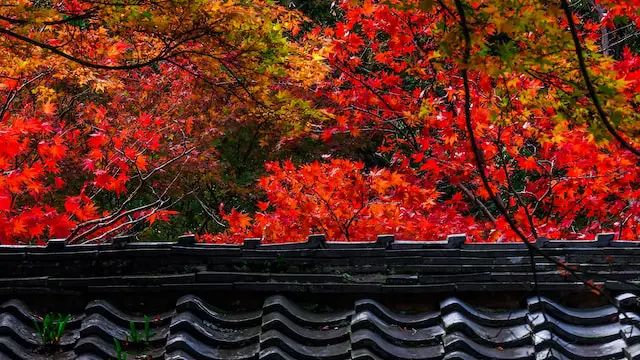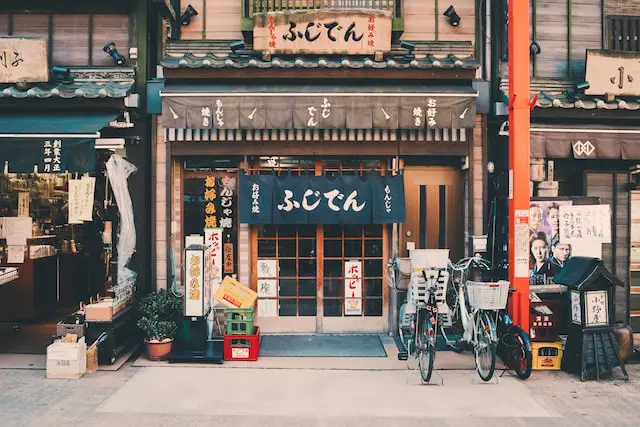Japanese cuisine, a fascinating gastronomic journey, boasts a diverse array of flavors embodying the country’s rich cultural heritage. From traditional dishes exuding pure simplicity to internationally recognised sushi and ramen, Japanese food culture is revered worldwide for its artistry and flavors.
The popularity of sushi – a delicate piece of fish hugged by vinegared rice, and ramen – an enchanting bowl of noodles swimming in a flavorful broth, have made them global favorites. Nonetheless, the diversity of Japanese cuisine extends far beyond these staples, rooted deeply in the land of the rising sun’s lifestyle and seasons.
Join us as we delve into a gastronomic journey through Japan, uncovering an array of palate-pleasing, visually tantalizing dishes. This journey promises to enlighten your understanding of Japanese cuisine and expands your taste horizons beyond sushi and ramen.
Understanding the Philosophy of Japanese Cuisine
The culinary scene in Japan is characterized by its reverence for freshness, seasonality, and simplicity. The entire essence of Japanese cuisine is rooted in the philosophy of harmony, respect, and appreciation of the natural flavors. Furthermore, the nation’s profound respect for nature intertwines closely with its food practices.
Term to note, Washoku, which is recognized by UNESCO as Intangible Cultural Heritage, refers to traditional Japanese cuisine. Washoku highlights the integral role of the seasons, suggesting the importance of using fresh, seasonal ingredients to highlight their peak flavor, and the dishes frequently have a colorful aesthetic that matches each season’s mood.
Meanwhile, another Japanese culinary tradition, Kaiseki, takes this a step further. Kaiseki is a multi-course dining experience, where chefs meticulously arrange dishes that celebrate the seasonal bounty. In both washoku and kaiseki, simplicity and harmony are prized, showing reverence for the natural flavors, without overwhelming them with too many seasonings or heavy sauces.
The concept of Umami, a fifth taste beyond sweet, salty, sour, and bitter, is another cornerstone of Japanese food culture. Emphasizing the savory, deep flavor of ingredients like seaweed, fish, and fermented soy, umami is critical to understanding the depth and complexity of many Japanese dishes.
This philosophy of harmony in flavor, respect for nature’s bounties, and a pursuit for the perfect umami taste have shaped the rich Japanese culinary tradition we know today. So, ready to embark on a gastronomy journey through Japan?
Delving into the Flavor-filled World of Donburi
One cannot talk about Japanese cuisine without mentioning the beloved Donburi. This versatile dish is a household staple in Japan, coveted for its simplicity yet packed with flavors that guarantee a rewarding gastronomy journey. It’s a staple comfort food that has traversed the boundaries of home kitchens, permeating restaurant menus globally.
Donburi, translating simply to “bowl”, is essentially a Rice bowl dish that is topped with a variety of ingredients. The dishes are diverse, from the famous ‘Gyudon’ featuring perfectly simmered beef and onions to the ‘Unadon’ topped with grilled eel, it’s difficult to resist this comfort food.
Each Donburi dish embodies the Japanese food culture, which is rooted in simplicity, freshness, and a harmony of tastes. From the lightly seasoned rice to the expertly cooked toppings, the components may be straightforward, but their symphony provides a complex and satisfying dining experience.
It’s essential to note that the secret to a great Donburi is a good “Tare” or sauce, usually soy-based, which delicately complements each bite. The touch of pickled vegetables or a soft, runny egg often garnishes Donburi, rounding off the experience with a burst of contrasting flavors.
If you’re looking for a gateway to Japanese cuisine beyond the usual sushi and ramen, the universe of Donburi awaits you. It is a perfect representation of daily Japanese cuisine that never compromises on taste or comfort.
The Art & Variety of Tempura
Anyone taking a deep dive into the magnificent world of Japanese cuisine is bound to come across the iconic dish known as Tempura. A shining star of Edo style cooking, this mouthwatering delicacy has a captivating history and an influence as vast as the Japanese archipelago itself.
Tempura, essentially batter-fried foods, traces its origins back to the mid-16th century. Its inception is often connected to the Portuguese missionaries who introduced the concept of batter frying to Japan. Since its arrival, this cooking style has been significantly refined and fully integrated into the heart of Japanese cuisine, offering a unique gastronomic treat to any palate.
The main attraction with Tempura is the irresistibly delicate, light, and crispy batter that coats an array of ingredients. Whether it’s sea-fresh prawns, subtly sweet pumpkin, or young tender asparagus, the Tempura magic works superbly across an incredible variety of food items, brilliantly encapsulating the essence of the ingredient beneath the crispy exterior. This focus on preserving the natural flavor aligns with the fundamental principles of Japanese food culture – simplicity, purity, and respect for ingredients.
Despite its simple, unassuming appearance, making perfect Tempura is an art in itself and requires years of practice. From mixing the batter to maintaining the right frying temperature, every detail matters. Top tempura chefs add an extra touch, serving their freshly fried tempura on a bed of rice or alongside a dashi-based dipping sauce for an added layer of complexity.
In conclusion, Tempura, with its wonderful texture and pure flavors, is not just a dish. It is a gastronomic journey; a culinary representation of Japan’s deep-rooted reverence for nature’s bounty and the philiosophy of enjoying food in its most essential form.
Unveiling the Authenticity with Nabemono or Hot Pot dishes
In the heart of Japanese winter food tradition lies a warm, hearty and appealing culinary experience – the Nabemono or Japanese hot pot dishes. Drawing inspiration from a communal style of eating, these essentially embody a delicious blend of flavors, textures and warmth, unifying an eager gathering of friends and family around the cooking pot.
Each region of Japan presents its unique take on this irresistible recipe, resulting in a vast array of Hot pot dishes showcasing the nuances of local ingredients and culinary customs. Be it the enticingly wholesome Sukiyaki, a hot pot dish with thinly sliced beef, tofu, and vegetables simmered in a sweet-soy broth, or the robust Motsunabe made with offal – every Nabemono is a delightful expedition through different tangents of umami.
And then there’s the Shabu Shabu, a joyous celebration of paper-thin slices of premium meats and vegetables, blanched briefly in a simmering broth right at the dining table. It’s name as onomatopoeia, representing a ‘swish, swish’ sound as ingredients are swirled and cooked within the pot.
The unity of taste and simplicity, euphoria lingering in every bite, assures an authentic encounter with the heart of Japanese cuisine with Nabemono. So the next time your gastronomic compass points towards the land of the rising sun, ensure that it includes this comforting exploration into the Japanese winter food culture!
Exploring the Taste of Japanese Street Food
To truly immerse oneself in Japanese food culture a gastronomic journey into its street food is indispensable. Vibrant, delectable, and filled with layers of flavors, Japanese street food is a rich tapestry of Japan’s culinary landscape. Widely enjoyed by locals and tourists alike, these delicacies often speak stories of local customs, seasonal ingredients, and regional tastes.
The bustling streets of Japan are dotted with food stalls, locally known as Yatai, serving a scrumptious array of quick and savory bites. Among these, Takoyaki and Okonomiyaki are crowd favorites, enjoyed by street-food enthusiasts seeking to indulge in authentic Japanese flavors.
Takoyaki, literally meaning ‘octopus balls’, is a popular street snack originating from Osaka. These are batter-cooked bite-sized balls stuffed with diced octopus, tempura scraps, and pickled ginger, then garnished with bonito flakes and a sweet-salty sauce. The contrasting textures and the burst of flavors make them an irresistible treat.
Okonomiyaki, hailed as ‘Japanese pizza’, is a savory pancake layered with diverse ingredients such as shredded cabbage, meat, and seafood based on your choice (‘okonomi’ translates to ‘as you like’). Topped with a special Okonomiyaki sauce, mayonnaise, seaweed, and bonito flakes, it’s a delicious reflection of Japan’s love for harmony in culinary creations.
Unearthing Japan’s essence through its street food offers a unique perspective enriching your gastronomy trail. After all, it’s here, amidst the hustle-bustle and wafting aromas, we find Japan’s heart. So when in Japan, remember it’s not just about sushi or ramen – there’s a whole world of flavor-packed street foods waiting to be explored.
Next on our gastronomical journey through Japan, we delve into the revered and artistic world of the Japanese tea ceremony, complemented by the delicate and intricate Wagashi confectionery, and the unmistakable Matcha tea. The experience of sipping tea while feasting eyes on these aesthetically pleasing treats underlines a tradition deeply rooted in Japan’s cultural ethos.
Essentially, the Japanese tea ceremony, or Chanoyu, encapsulates not just the physical act of drinking tea; it is a spiritual process combined with precisely choreographed movements, a moment of serenity, reflecting the core essence of Japanese culture. Here, we spot the key role Matcha plays. The powdered green tea, whisked to perfection, exhibits a rich umami flavor and a vibrant green shade, contributing to the aesthetic and sensory delight.
Accompanying the tea ceremony is the artful traditional Japanese confectionery — Wagashi. Made with plant-based ingredients like sweetened beans and glutinous rice, these confections echo the beauty of nature through their designs, often taking shapes of flowers, animals, fruits, or seasons, echoing a harmonizing balance with nature. Intriguingly, the flavor and presentation of Wagashi change with the seasons, illuminating the Japanese principle of enjoying the ephemeral beauty of nature.
But it’s not just about aesthetics; Wagashi is methodically crafted to complement the bitterness of Matcha, creating a harmonious balance between the sweet and bitter, oscillating palates between both ends, thereby, augmenting the entire tea-drinking experience. As we reflect on the nuances of the Japanese Tea Ceremony and the symbiosis it shares with Wagashi, it’s clear that our exploration of Japanese cuisine is far from over. There are still many layers to peal and flavors to sample in this complex and exquisite cuisine.
Exploring Regional Specialties and Bento Boxes
As we continue our gastronomical journey, let us explore the core of Japanese cuisine, its regional specialties. With every prefecture boasting its unique food traditions, Japan’s culinary landscape is as diverse as it is delightful. From Hokkaido’s fresh seafood dishes to Okinawa’s tropical delights, each territory adds a unique flavor palate to the broader panorama of Japanese food culture.
For instance, the food in Kansai region — home to cities like Kyoto and Osaka — is known for its subtle and nuanced flavors. On the other hand, dishes from the Kantō region, where Tokyo lies, are characterized by stronger, assertive flavors. This diversity in Regional Japanese cuisine provides a stimulating experience for every food lover out there.
Adding to this exciting gastronomic journey, we present the traditional Bento Boxes. Bento, literally translating to ‘convenient’, is the Japanese version of a packed meal. Bento boxes are a classic symbol of the country’s food culture, dating back to the Kamakura period. Typically, a bento box is a single-portion meal with rice, fish or meat, and pickled or cooked vegetables, often neatly packed in a box-shaped container. Today, these meals have evolved into creative and aesthetic presentations, turning food into edible works of art.
To experience the real magic of Japanese cuisine, one must venture into the vibrant corners of regional cooking and indulge in the simplicity of a Japanese food box. After all, at the heart of each prefecture’s local produce and every bento lies the essence of Japan’s rich, culinary heritage.
The Healthy Pursuit of Plant-Based Japanese Cuisine
Welcome to our exploration of the verdant world of Plant-based Japanese cuisine. This gastronomy journey unveils a treasure trove of Vegan Japanese dishes that have endured centuries, deep rooted in cultural and spiritual beliefs. Japan’s incredible finesse at balancing unique flavours and nutritional richness is truly encapsulated in its plant-based fare.
One such ancient cuisine is Shojin Ryori, a Buddhist culinary tradition comprising entirely of vegetarian dishes. Originally prepared in Buddhist temples, Shojin Ryori relies heavily on fresh seasonal produce and whole grains, adhering to simplicity and tranquility in cooking. One of its many virtues is its focus on minimizing waste by using every part of an ingredient, leading to a culinary practice that’s not just healthy but also environmentally friendly.
Shojin Ryori is not merely prepared; it is crafted. Each dish is a harmonious balance of five flavors – sweet, salty, sour, bitter and umami; and five colors – green, red, yellow, black and white, hence it is perceived as food for the soul and the body. Some popular dishes include the ‘Goma-dofu’ or sesame tofu and ‘Yuba’ or tofu skin which is rich in protein.
It is also worth noting the wealth of Japanese vegan Sushi options, brimming with vibrant vegetables, and the humble Miso soup – a nourishing broth exploding with umami, usually savored with tofu and seaweed. These plant-based dishes demonstrate a commitment to fresh, vibrant ingredients, simple cooking techniques and a true respect for nature.
By savoring the hearty and nutrient-dense plant-based Japanese cuisine, you do not just take a gastronomic journey across Japan, but you also enjoy the rich history, culture and philosophy of Japanese culinary arts.
In our culinary journey, we have dived deep into the world of “Japanese cuisine,” appreciating its incredible diversity and rich tradition beyond the globally popular sushi and ramen. With every food story, we’ve embraced the philosophy of “Washoku”, discovered the comforting simplicity of “Donburi”, marveled at the artful uniqueness of “Tempura”, and warmed ourselves with the authentic “Nabemono”.
We savored the irresistible “Japanese street food,” found tranquility in the “Japanese tea ceremony,” and cherished the variety in “regional Japanese cuisine” and “Bento Boxes”. We also explored the nutritiously rich realm of “plant-based Japanese cuisine”. This gastronomy journey taught us the art, delicacy, and depth involved in Japanese food culture. As we part, let’s keep the spirit of these traditional dishes alive, and continue our journey to “Explore Japan” through its incredibly diverse and delicious cuisine.




